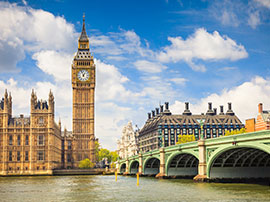MSc / PgDip / PgCert建筑设计保护建筑遗产
MSc Architectural Design for the Conservation of Built Heritage

学历文凭
Masters Degree (Taught)

专业院系
Architecture

开学时间

课程时长

课程学费

国际学生入学条件
IDP—雅思考试联合主办方

雅思考试总分
6.5
了解更多
雅思考试指南
- 雅思总分:6.5
- 托福网考总分:80
- 托福笔试总分:160
- 其他语言考试:PTE - 60 overall, with a minimum of 59 in each component
CRICOS代码:
申请截止日期: 请与IDP顾问联系以获取详细信息。
课程简介
Study with us fully recognised by the Institute of Historic Building Conservation (HBC)design-orientated and research-based coursegain skills and knowledge to produce an architectural conservation and design projectbenefit from teaching by leading experts Why this course Architectural conservation is an emerging area of work which requires specialist training and knowledge to deal with its multidisciplinary and interdisciplinary nature. It requires the development of a critical approach for the analysis and design of the intervention, informed by the shared international principles and the specific nature and context of the historic building to be conserved. The course provides a platform for collaboration with both practice and research partners, architectural critique, and discussion and debate. Architectural conservation – the action of conserving built heritage while maintaining its values - is practiced differently across the world; sometimes not at all due to cultural and economic constraints. We need to attract new talent to the field of architectural conservation. To work with historic buildings is an enriching experience, which combines the creative aspects of designing a new building with the in-depth research required to understand in full the building and its context. Working with historic buildings is also a great training to improve the design of new buildings, as you learn a great deal about the importance of design ideas, innovation, durability and care. It is also a very sociable work, interacting with a variety of people from all backgrounds, joining forces in helping current generations to enjoy historic buildings, to create community identities around them, and to transmit the buildings and their values to the future. Glasgow and its surrounding area provide an excellent location for the course, with architectural heritage from all periods, from Roman to Medieval, Georgian, Victorian and contemporary, without forgetting the better known Charles Rennie Mackintosh and Alexander ‘Greek’ Thomson’s buildings. Strathclyde has a lively international community of staff and students and we enjoy a privileged position in the centre of Glasgow.
相关申请
 预科
预科 奖学金
奖学金 实习机会
实习机会 在校学习
在校学习 跨境学习
跨境学习 校园授课-线上开始
校园授课-线上开始 在线/远程学习
在线/远程学习
学校排名

世界排名401
数据源:泰晤士高等教育世界大学排名
关于思克莱德大学

斯特拉思克莱德大学是一所国际领先的科技大学,位于英国最大城市之一格拉斯哥的市中心。这所屡获殊荣的大学成立于 1796 年,是一个 ''有用学习的场所'',拥有来自 140 多个国家的约 30000 名学生。该大学提供灵活、创新的学习方式,并通过世界一流的研究和教学提供卓越的学术成果。斯特拉思克莱德大学的许多课程都包括产业实习机会,帮助毕业生在学习之余适应瞬息万变、竞争激烈的环境。格拉斯哥是一座充满活力和生机的城市,到处都是咖啡馆、餐馆、酒吧、绿地、现场音乐、艺术和文化。作为经济和商业中心,格拉斯哥还为实习、就业和人际交往提供了良好的前景。格拉斯哥是重要的国际商业中心,也是英国排名前十的数字科技城市。学生可以期待卓越的教学水平、世界一流的研究机会以及行业联系和业务联系,确保学生为毕业后的理想职业做好有效准备。
本校相关课程

MEng海军建筑与高性能船用车辆
学历文凭
Undergraduate Masters
开学日期
课程费用总额


工程学与海洋工程学硕士
学历文凭
Undergraduate Masters
开学日期
课程费用总额


工学海军建筑与海洋工程
学历文凭
Undergraduate Masters
开学日期
课程费用总额


机械工程与材料工程学硕士
学历文凭
Undergraduate Masters
开学日期
课程费用总额


机械工程与财务管理学
学历文凭
Undergraduate Masters
开学日期
课程费用总额


机械工程与航空工程学
学历文凭
Undergraduate Masters
开学日期
课程费用总额

其他相关课程

Bachelor of Interior Design (Commercial)
 比利·布鲁设计学院
比利·布鲁设计学院学历文凭
Bachelor Degree
开学日期
课程费用总额


规划硕士(城市设计)/景观建筑硕士
 阿德莱德大学
阿德莱德大学学历文凭
Masters Degree (Coursework)
开学日期
课程费用总额


城市和区域规划硕士
 堪培拉大学
堪培拉大学泰晤士高等教育世界大学排名:470
学历文凭
Masters Degree (Coursework)
开学日期
课程费用总额


室内建筑学士
 堪培拉大学
堪培拉大学泰晤士高等教育世界大学排名:470
学历文凭
Bachelor Degree
开学日期
课程费用总额


城市和区域规划硕士-课程
 西澳大学
西澳大学学历文凭
Masters Degree (Coursework)
开学日期
课程费用总额


室内建筑设计学士学位
 悉尼科技大学
悉尼科技大学学历文凭
Bachelor Degree
开学日期
课程费用总额





















 英国
英国




